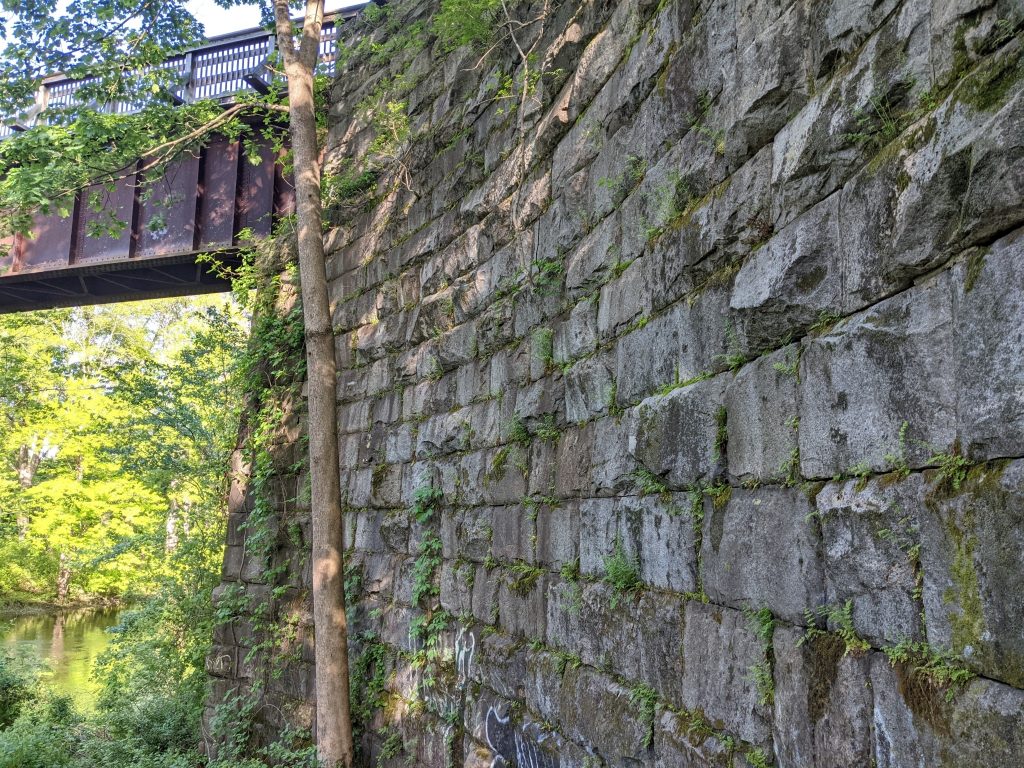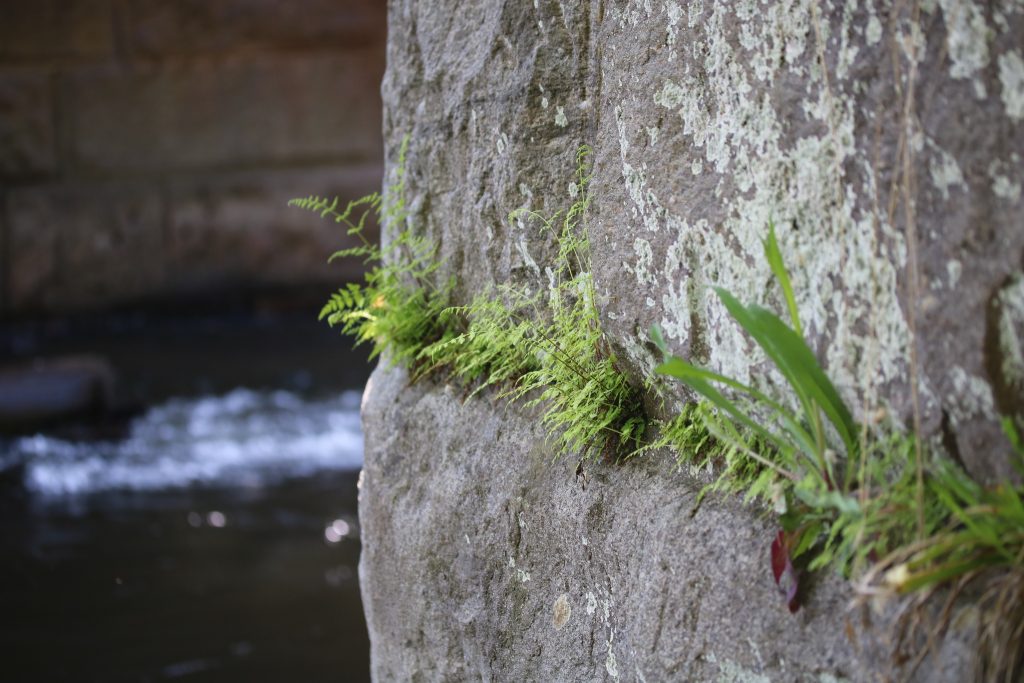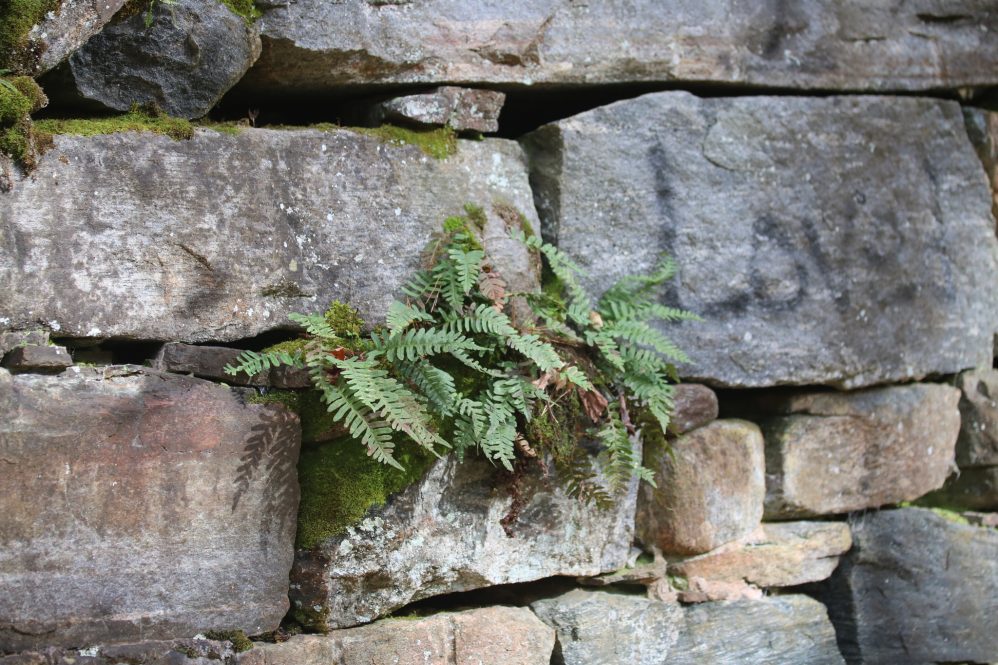Urban areas are characterized by concrete, stone, and asphalt, and are often perceived as unnatural. However, they may provide certain plant species with expanded habitat space.
In research published in the American Journal of Botany, Department of Earth Sciences Assistant Professor in Residence Tammo Reichgelt used citizen science data to show that while some ferns prefer to remain rural, others thrive in urban settings and could play a role in mitigating the urban heat island effect.
Reichgelt explains that the project was initially a hobby that grew after he noticed a peculiar phenomenon while on a walk.
“I just happened to notice, ‘Wow, there’s a lot of ferns here. Strange.’”
Strange, because he was not walking around the woods or another area where ferns typically flourish, but was out on a stroll in the Rockville section of Vernon, surrounded by asphalt, concrete, and brick. Reichgelt is an active member of the iNaturalist community, which is an app where people log observations of plants and animals they spot around them. In iNaturalist he also started noticing this out-of-place presence of ferns in human-made environments and found that it seemed to be the case only with specific fern species. Despite this intriguing observation, there is limited research on species preference for urban environments. But from these casual observations, it started to look like some ferns appear to thrive in urban settings, while others prefer the tranquility of rural life.

Reichgelt started visiting different towns around Connecticut to log new entries to see how pervasive these ferns are in urban environments.
“Especially in old mill towns in Connecticut, like Rockville, Willimantic, or Norwich, that tend to have a denser and older urban core, there were rock-dwelling ferns on buildings, bridges, and other structures. It seems like they particularly like railroad bridges and retaining walls,” says Reichgelt, who started to wonder if he could do an analysis explaining what drove species establishment in urban areas.
After obtaining more than 22,000 georeferenced observations, mostly from iNaturalist, for 16 rock-dwelling fern species found in the Northeast, Reichgelt overlaid the observational data with land-use data from the United States Geological Survey (USGS). The land-use data helped differentiate between natural environments and developed surfaces, and enabled a large-scale spatial analysis of the fern observations and the environments where they were spotted growing. Lo and behold, Reichgelt found a large difference between different rock-dwelling fern species throughout the Northeast.
“Over 50% of blunt cliff fern (Woodsia obtusa) observations were in highly developed areas,” he says. “The purple stem cliff brake (Pellaea atropurpurea) is more common south of Connecticut, but abundant in developed areas. A surprising species is the Tennessee bulblet fern (Cystopteris tennesseensis), which is rare in its natural range but seems to thrive in the Philadelphia suburbs.”
Through his analysis, Reichgelt found that the two significant climatic variables dividing the urban ferns from species that have remained rural are average summertime temperature and the highest summer temperature.
“That means these plants need to be adapted to hot environments to be able to survive in an urban environment. Urban areas, mainly because of the high heat capacity of building materials like concrete and asphalt, tend to be much hotter in summer than their rural surroundings, a phenomenon known as the Urban Heat Island Effect,” says Reichgelt. “That these fern species are pre-adapted to hotter environments seems to predispose them to be able to thrive in urban environments. For the 11 species that don’t grow in urban environments, it seems that they cannot tolerate the Urban Heat Island effect.”
That doesn’t necessarily mean that the others do not grow on human-made vertical surfaces at all, rather, they just don’t do it in urban environments, says Reichgelt.
One example is the rock polypody (Polypodium virginianum), which is happy growing on human-made walls as long as it has some protective cover from other vegetation. Another example is Mackay’s fragile fern (Cystopteris tenuis), which can be found growing on bridge abutments all over Connecticut, as long as it’s not in an urban environment. Reichgelt suspects these species are not found in cities, probably because the summer temperatures simply get too high there.
One useful aspect of using citizen science data like that from iNaturalist is that the observations can come from anywhere that citizen scientists are, and this adds a new variety to what kinds of data are available and makes studies like this possible. Reichgelt says that occurrence data generally comes from herbariums who usually collect in sample plots in natural environments.
“Very rarely would researchers go and make observations in urban environments. Citizen science data is an interesting new source of information that is rapidly crowding out other sources of information. The inclusion of urban habitats is an example of an advantage of using citizen science. Still, scientists have only just started to look into potential novel biases that are unique to citizen science.”

Reichgelt is a paleobotanist who studies Earth’s ancient climate states and the plants that thrived in them. This may seem like an unlikely background to start exploring why some ferns are expanding their habitats into urban settings.
In his paleoclimate studies, Reichgelt uses the modern range of plants to understand the climatic conditions a fossil plant may have lived in.
“Let’s say you find a palm fossil in the Arctic. I use the modern-day climate niche of palms to reconstruct the climate of the Arctic at the time. I base that on modern-day occurrence data. You can use a similar occurrence-based climate niche analysis to figure out why different fern species grow in urban environments.”
Reichgelt did not find many published studies exploring similar observations, and none for ferns specifically. This project has turned into an unexpectedly interesting rabbit hole that Reichgelt is excited to continue exploring. He plans to compare physiological differences between ferns in both environments and study aspects of the microenvironments where the ferns are observed,
“I would like to compare whether urban and rural ferns have different functional traits, for example whether they differ in their water regulation or how they photosynthesize. In other words, what are the adaptations that allow certain ferns to thrive in urban environments?”
These findings are useful because knowing that these species thrive in human-made environments could be helpful for researchers looking for ways to mitigate human health-related issues in urban environments, such as Urban Heat Islands, and ferns could be especially useful since they seem to thrive without human intervention.
“The weird thing about these urban ferns is that they grow in places that are not tended,” he says. “They’re native to the area but are weedy in these urban environments. Having something that can survive in an urban area and absorb the heat cools the city down. A tree has a large surface area, so focusing on trees or vines makes a lot of sense. Still, if you want to create a diverse urban ecosystem, you want to include a diverse array of species because an ecosystem builds from the ground up. Ferns are relatively easy and cheap, because urban fern establishment seems to literally just be a matter of lack of maintenance.”



